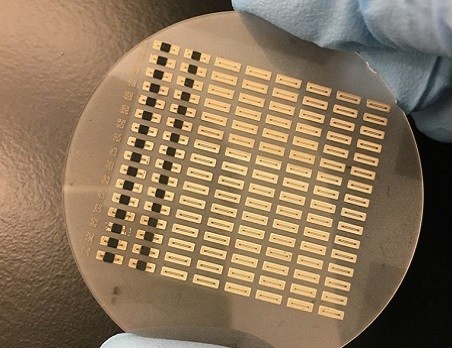Inkjet-printed switches to manage multiple frequency bands

Frequency-tuneable communication modules, such as antennas and filters, are expected to help miniaturise wireless devices. Now, researchers at King Abdullah University of Science and Technology (KAUST) have created switches that enable control over these modules in response to stimuli.
Mobile devices to support multiple standards, such as a global positioning system and a global system for mobile communications, require antennas that are capable of covering several frequency bands. As noted by KAUST PhD student Shuai Yang, “Radiofrequency switches are the key to realising cost- and space-saving frequency-tuneable antennas and filters.”
Commercially available radiofrequency switches have performance limitations and involve convoluted fabrication approaches that require expensive materials and tools. With this in mind, Yang and his fellow researchers worked under supervisor Atif Shamim on the development of a cost-effective inkjet printing method to generate switches, described in the journal Advanced Materials Technologies.
The switches consisted of thermally and electrically responsive single layers of vanadium dioxide, with the researchers synthesising vanadium-dioxide nanoparticles with a specific crystal arrangement to create the desired ink. They printed two different switch configurations that could be triggered thermally and electrically. The performance of these switches was comparable to their non-printed analogues, but at a lower cost.
“Just as for newsprint, the cost of printed electronics is extremely low,” said KAUST postdoctoral fellow Mohammad Vaseem.

As a proof-of-concept experiment, the team incorporated the switch in a tuneable antenna printed on a flexible substrate. At room temperature, the antenna could work in the range corresponding to future 5G communications. When heated, the switch allowed the antenna to operate in the Wi-Fi and Bluetooth range.
According to Yang, the switch will eventually become useful for mass-producing smartphones and other wireless devices. In preparation for these developments, the team is building an accurate switch model for computer simulations.
“We are also working on improving the performance of the switch,” Vaseem added.
Please follow us and share on Twitter and Facebook. You can also subscribe for FREE to our weekly newsletter and bimonthly magazine.
Organic transistor 'limitation' improves stability
Researchers have shown that a longstanding organic transistor design limitation actually improves...
OLED circular polarisation is now electrically switchable
Researchers have discovered a way to control left- or right-handed polarised light via charge...
Nanoscale pixels to advance augmented reality eyewear
Physicists have developed extremely small pixels that can be used in compact AR glasses, using...





